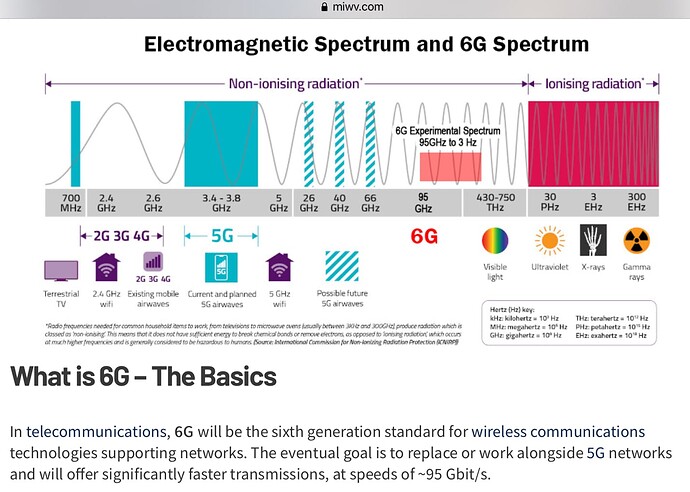A potentially attractive plan instead of NBN for many users who don’t need ultrafast connections…
I have periodically read about concerns of 5G impacting aviation but this the first time a simple quantification of the potential problem has been published.
It comes down to the nearness of the frequencies used for radar altimeters and a 5G band. The loser would be the airlines that could not operate in some instrument conditions at some airports, and the winner the telcos. The worst losers could the souls on-board an airplane that crashes because the radar altimeter got confused. A simple solution? Replace all the radar altimeters with units using a different frequency - until those too are pushed into the land of the telcos.
As the article states there is no hint of compromise, just data sharing that could determine a risk level. A note, there are multiple 5G frequencies and the contentious ones in the USA are only just going to be ‘turned on’ 5 January. Our carriers might not use them - yet.
So it is expected in 2030 that some will have 6G networks in place, with Terahertz bands being used. What impact will that have on Aviation as outlined in @PhilT’s piece on 5G interference? What impact on fixed networks? What impact on the value of the current below par MTM NBN network?
6G: What It Is & When to Expect It (lifewire.com)
6G enters orbit – IEEE Future Directions
As we increase the bandwidth used, we need a fixed network that can handle the increased demand for traffic and the increased traffic. The more we want means that MTM infrastructure will not serve a purpose that meets that want, fibre is the only service that currently has both current capacity and yet untapped capacity to meet those future fixed network needs. I still don’t see wireless replacing that fibre “backbone”.
A bit dated of an experiment, but it might be leading edge for certain of our decision makers. Cheap as chips so it must be a good direction, right!
Running out of bands? 3THz is still way short of interfering with that new light sabre. ![]()
Mi-Wave is an early developer of hardware and hardware components.
It appears different countries are using different parts of the 5G spectrum. Australian 5G transmissions top out at 3.7GHz with has enough frequency separation to ensure no interference with aviation. Even in the US, where concerns are front and centre, there is mounting evidence that US 5G, the risks maybe overinflated/unproven. The US 5G tops out at 3.98GHz where the aviation radio altimeter range starts at 4.2GHz. Between 3.98GHz and 4.2GHz
In very, very rare circumstances there may be an inaccuracy in the estimation of altimeter readings due to potential inference from the bands.
In the US, unlike Australia,
Even if the risk of 5G emissions confusing an altimeter is very low, the consequences of a plane misjudging the ground are potentially catastrophic, and include death for the passengers.
Aviation disasters happen in very rare circumstances. I also read the link when it was published and it was reassuring that the ‘rest of the world’ is not quite as auction happy with spectrum as the USA appears.
A few EU carriers signalled they might avoid certain US airports if the 5G was turned on near them, as a matter of safety.
while the US ‘adjusts’
